#Walls Asia Architects and Interiors
Text
https://wallsasia.com/
The best Architecture firm in Hyderabad - Walls Asia
Walls Asia delivers absolute Architecture and Interior Design services, from innovation to execution. We specialize in residential, commercial and industrial projects, ensuring each space is uniquely tailored to our client's needs
#wallsasia#architecture#hyderabad#architects#interior designer#walls asia architects#interior#interiordesign#architecturaldesign#design
0 notes
Text
One World Trade Center

285 Fulton St, New York, NY
One World Trade Center also known as One World Trade, One WTC, and formerly Freedom Tower is the main building of the rebuilt World Trade Center complex in Lower Manhattan, New York City.
Location 285 Fulton Street, Manhattan, New York City, U.S. 10007
It is bounded by West Street to the west, Vesey Street to the north, Fulton Street to the south, and Washington Street to the east.
One World Trade Center is a masterfully designed building and a symbol of resilience and resolve.
MARCH 29, 2022 One World Trade Center 95 Percent Leased With Latest Deal: Durst
As of September 2016, One WTC became the tallest building in the western hemisphere to be awarded a Leadership in Energy and Environmental Design (LEED) gold certification. LEED is an internationally recognized green building certification system, which recognizes structures that have been built and designed using strategies that address energy savings, water efficiency, and CO2 emissions reduction.
Constructed using more than 40% post-industrial recycled content and with more than 87% of construction waste diverted from the landfill, One WTC is a sustainable force to be reckoned with.
Where in New York is the World Trade Center?
The complex—located at the southwestern tip of Manhattan, near the shore of the Hudson River and a few blocks northwest of Wall Street—was built by the Port Authority of New York and New Jersey as a central facility for businesses and government agencies involved in international trade.
Can you see the Statue of Liberty from One World Observatory?
The observation deck at One World Observatory (the 'Freedom Tower') offers breathtaking views of New York Harbor, including the Statue of Liberty.
One World Trade Center
The One World Trade Center (1WTC) is the most important building of the new World Trade Center, established to substitute the complex wrecked in the September 11 attacks.
Construction
The construction of the building began on 27 April 2006, nearly 5 years after the Twin Towers were destroyed. Nevertheless, the first cornerstone was laid on 4 July 2004 - two years earlier, in a symbolic ceremony. During the first years, the skyscraper was known as Freedom Tower. The skyscraper was inaugurated on the 3 November 2014.
The architect David Childs and Skidmore Owings & Merrill company were commissioned the design of this new skyscraper. The designer had previously created the Burj Khalifa in Dubai, the Willis Tower in Chicago and Jin Mao Tower in China.
Standing 1,776 ft (541 m)-tall, it is currently the sixth highest building in the world. The tallest is in Asia. The rooftop stands 417 meters high, the same measurements as the first tower in the original World Trade Center.
One World Observatory
Inaugurated the 29 May 2015, 13 months after the skyscraper was opened to the public, the One World Trade Center observation deck, known as the One World Observatory, has become one of the most popular tourist attractions in New York. It offers unimaginable panoramic views of New York.
The One World Observatory occupies the last three floors of the skyscraper (floors 100 – 102) and reaches a height of 386.5 meters. It is the tallest observatory in New York. The 360° views give visitors a vision of up to 80 km in all directions.
Sadly, unlike the observations decks of the Empire State and Rockefeller Center, the One World Observatory does not have an outdoor terrace, it is all interior with large glass windows. This makes it is harder to get a good photograph and visitors won’t feel the pulse of the city like on the other viewpoints.
Worthwhile, But…
If you enjoy modern architecture and want to observe New York City from its new iconic skyscraper, we recommend the One World Observatory. The whole experience, from as soon as you walk inside the building, take the elevator covered by led panels that recreate the growth of the city from it once founded.
This said, the city’s best viewpoints are without a doubt: The Empire State Building Observatory followed by the Top of the Rock, since both offer different sensations. The One World Observatory would be our third favorite.
Skip the Line Tickets
The number of tickets is limited by scheduled turns, which means, that visitors must buy their tickets in advance. If not, the waiting line can be several hours long.
To avoid wasting time in tiresome lines, we recommend visitors pre-book tickets. These can be printed out or on downloaded on the smartphone.
Location
285 Fulton Street.
Schedule
Open every day of the year: 9am -10pm.
On certain dates the landmark closes at 8pm.
Price
Adults: US$ 40.28 (€ 37.80)
Over 65s: US$ 38.11 (€ 35.70)
Children 6-12: US$ 33.75 (€ 31.60)
Children under 6: Free.
One World Observatory Tickets US$ 46.82 (€ 43.90)
#one world trade center#one world trade#world trade center#freedom tower#one wtc#fulton street#New York City#new york#city#urban#new-york#manhattan#nofollow#one world observatory
43 notes
·
View notes
Text
The Rise and Fall of Empires
After an uneventful day of transit, we landed quite late in Turkiye and were rushed quickly to dinner before we pulled in at the hotel that we would be staying at in Istanbul: the Pullman. On the two hour flight from Cairo to Istanbul (for most of the day, we simply sat around the hotel before hopping onto the coach that would deliver us to the airport at 10AM), I managed to watch Bullet Train and tick off the chaotic but fun movie from my long list of films that had looked interesting but I hadn’t bothered to go into the cinemas to actually well...watch.
In any case, by the time I had showered and fallen asleep on the soft bed at the Pullman, it was quite late and we had an early start the next day.

At about 6:35AM, I was rudely awoken by a morning wake-up call and served as a reminder that I was late! Popo and I came down for a hurried breakfast before boarding the coach that would take us around the ancient city of Istanbul, or Constantinople as it was previously known during the Byzantine and Ottoman eras.
We arrived at our first stop for the day: a decently sized marine vessel, just before 9AM. Hopping on, we enjoyed a cruise around the Bosphorus Strait, providing us with excellent views of the city of Istanbul. It should be known that the city straddles the bridge between Europe and Asia and has proven to be a pivotal beacon throughout most of history. It played a key role in Christianity before it fell to the Ottomans and became an Islamic stronghold.
As such, the history of Constantinople is really a history of the world, as well as a symbol of the West’s relationship with the East.
But back to a recount of my trip there!
It was unfortunate that we had arrived in the city in March. The weather was still quite cool and after a good thirty minutes, I felt quite frozen to my spot on the upper deck and quickly sought shelter from the fierce wind.
After our trip on the high seas, our ship pulled into port near the Dolmabahce Palace. In Chinese, the palace is often called the “New Palace” as it was built in and around the mid 1800s and was in use for approximately 70 years until the 1920s when Turkiye became independent.
The style of the Dolmabahce Palace, although commissioned by an Ottoman Sultan, was very European in design. However, this was soon explained by the fact that the architect for the palace had studied in France and had helped build similar types of buildings all across Europe.
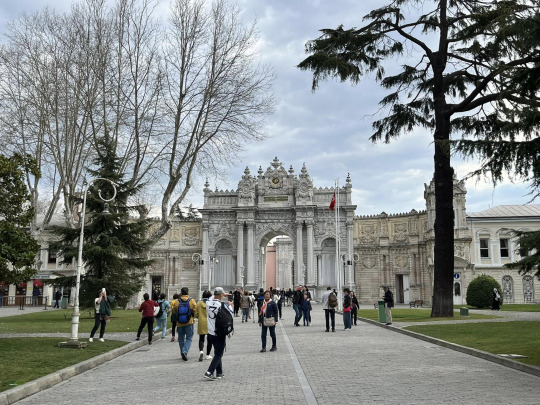

Still, the decorations inside the palace was a lot different to the ones I’d seen before in France and Austria. A shame, really, that photos were not allowed as I could show you rather than be forced to describe what I saw. Even though there were a few other tourists that took quite a few ‘subtle’ photographs of the rooms and the grand ceremonial hall.
Most notable, at least to me, were the paintings that lined the walls. Most of them depicted famous battles the Turks partook in. Another interesting piece of interior design that caught my eye was the crystal staircase, with the crystal primarily being the supporting columns of the banister.
Down in the old storage cellars, too, the palace sported numerous displays full of utensils compromised of Bohemian and Baccarat crystals. They also had Mosser glass, which the internet tells me can cost thousands of dollars because of their high-quality construction. Another location in the heart of the palace had displays for medals, weapons and Hokka sets.
But it should be noted that the palace also had similar trappings as its European counterparts such as the gilded halls, lavish drapings, huge mirrors, as well as beautiful chandeliers. Which will serve as useful material for my future writings although I lack photos for reference.
After touring the Dolmabahce Palace, we had a quick lunch in a spot that was, no doubt, frequented for its water views and which served as a popular fishing spot.
With our stomachs full of grilled fish, we headed to the Grand Bazaar, established all the way back in 1481 according to the plaque out front. There, we roamed the shops and I exchanged some Australian and American dollars into Turkish lira. And though there was a leather jacket I dearly wanted to purchase, my funds, unfortunately, did not have enough stretch to allow me to buy it out right. Nor did I want to risk using my debit card for fear that the details would be stolen and used for nefarious purposes.
Good riddance, I say! I didn’t want it anyways...
Maybe...
Gosh, I do wish I had bought that reversible leather jacket!
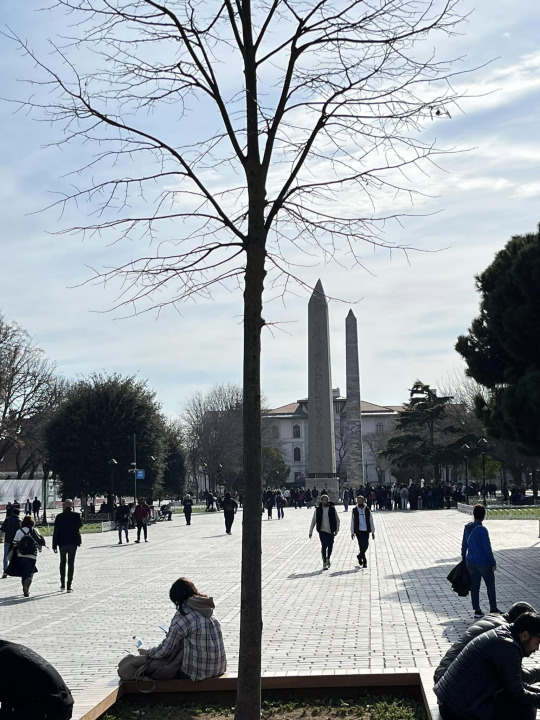

Once I had established how useless I was at haggling, we headed to the Blue Mosque, which sat opposite the Hagia Sophia. Due to ill luck, visiting on a Friday of all days, the Blue Mosque was closed by the time we arrived. It was also undergoing renovations. This fact angered one member of the tour group who was quite rude and aggressive to our tour guide for fear that we would miss out on all the key locations on the itinerary.
What he didn’t know, of course, was that the itinerary had already been rejigged when we had paid a visit to the Dolmabahce Palace earlier and we would have plenty of time upon our return to Istanbul to take a gander around a mosque if we so wished (which did happen, although it wasn’t the Blue Mosque!).
Undaunted by the trantrum thrown, the tour guide continued to tell us about the Roman Hippodrome that had been constructed in the heart of Istanbul and why the only signs of its presence was the obelisk that had been taken from Karnak Temple. Of course, we had already seen its twin when we visited Karnak Temple several days ago when we had given Egypt a whirl. Score one for a well-planned trip!
We then headed to the Hagia Sophia, which was initially built as a Church following the conversion of the Roman Empire to Christianity. The Hagia Sophia was later converted into a mosque when the Turks took the city. When Turkiye became independent, it served temporarily as a museum before being converted back into a mosque.
And to think that such a sight had been built in a mere 5 years!
True, a lot of the material, such as the Grecian columns used to support the roof, had been recycled from older buildings like a Temple to Artemis in the Ephesus region, but it still looked and felt like a marvel of engineering and vision.
The day ended with dinner at a doner kebab place before we headed back to our hotel for another long day ahead. Although, this time, we would mostly be on the road.




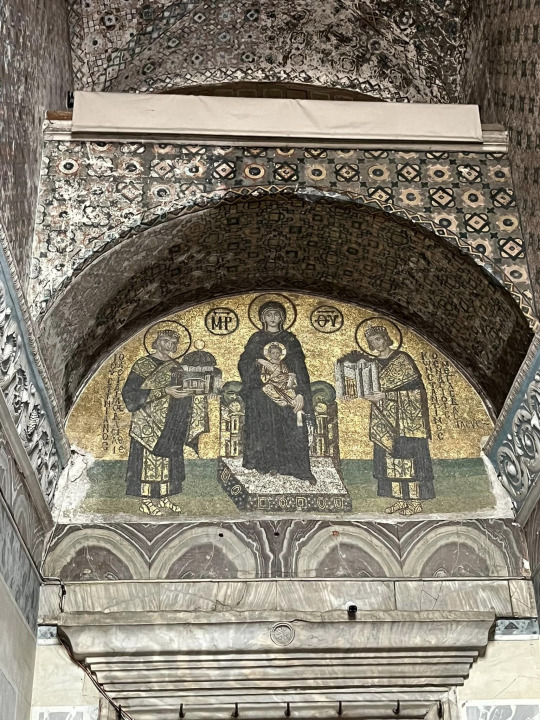
#travel blog#turkey#istanbul#constantinople#grand bazaar#bosphorus strait#dolmabahce palace#hagia sophia#hippodrome
3 notes
·
View notes
Text
Stainless Steel Decorative Sheets Stockists in India
Stainless Steel Decorative Sheet Manufacturers In India | Stainless Steel Decorative Sheet Suppliers In India
We offer a captivating selection of decorative stainless steel sheets, crafted from high-grade, rust-resistant material sourced from our trusted suppliers. These versatile sheets come in a variety of stunning finishes, such as mirror polish for a reflective touch, brushed for a modern look, or etched and embossed for added elegance.
Vibrant colors like copper plating are also available, along with the option for unique, laser-cut designs. Perfect for both interior and exterior design, these decorative sheets can elevate your kitchen backsplashes, elevator cabs, walls, ceilings, furniture, and more.
.Why Use Stainless Steel Decorative Sheets?
SS Decorative Sheets is a long-wearing thing and reasonable elective which have a tremendous interest among our clients. These lighting up steel sheets are given and exchanged by us all over USA, Australia, Canada, and Gulf Countries especially in Dubai, Bahrain, Iran, Iraq, Kuwait, Oman, Qatar, Saudi Arabia, and the United Arab Emirates, etc.
Other Industries in which Stainless Steel Decorative Sheets are Used: automatic doors, elevators, screen walls, decoration, kitchenware, transportation, medical, large scale & high degree architect, traffic facilities and are known for their fine surface finish.
Stainless Steel Decorative Sheets Manufacturers, Stainless Steel Decorative Sheets Suppliers, Stainless Steel Decorative Sheets Stockists, Stainless Steel Decorative Sheets Exporters
Stainless Steel Decorative Sheets Flanges Manufacturers in India, Stainless Steel Decorative Sheets Flanges Suppliers in India, Stainless Steel Decorative Sheets Flanges Stockists in India, Stainless Steel Decorative Sheets Flanges Exporters in India
Features
A rich color and good sense of beauty
High-end and elegant
High corrosion resistance
Applications
Interior and Exterior Decoration
Shopping Malls
Hotel Interior
Restaurant
We exports Stainless Steel Decorative Sheets for these countries – Asia, North America, western Europe, Singapore,etc..
For More Details
contact us:-+91-9920888220
email id:[email protected]
If any enquiries please contact us our support team will connect you as soon as possible.
0 notes
Text
Bringing Life to Spaces: The Alluring and Growing Decorative Laminates Market
The Decorative Laminates Market has been rapidly growing over the past few years, driven by the increasing demand for cost-effective and aesthetically appealing surfacing materials. Decorative laminates are widely used in interior design applications, such as furniture, flooring, cabinets, wall paneling, and countertops, due to their durability, versatility, and design flexibility. They are available in various textures, colors, patterns, and finishes, allowing designers and architects to create customized and trendy interiors.
The market has witnessed a significant shift towards eco-friendly and sustainable laminates in recent years, owing to the growing awareness of environmental concerns and the adoption of green building practices. Many manufacturers are now offering laminates made from recycled materials or using eco-friendly production methods. Additionally, the introduction of innovative and advanced laminates, such as fire-retardant, scratch-resistant, and anti-bacterial laminates, has also boosted market growth.
Request For The Sample Copy of The Report @ https://www.persistencemarketresearch.com/samples/3502
The Asia-Pacific region dominates the global decorative laminates market, with China, India, and Japan being the major contributors to the market growth. The region’s increasing population, rapid urbanization, and rising disposable income have resulted in a surge in demand for interior design products, such as laminates. Moreover, the growing construction industry, particularly in the commercial and residential sectors, is also driving the market growth. With the increasing popularity of decorative laminates, the market is expected to witness significant growth in the coming years, with manufacturers focusing on product innovation and sustainability to stay competitive.
About us: –
Persistence Market Research is a U.S.-based full-service market intelligence firm specializing in syndicated research, custom research, and consulting services. Persistence Market Research boasts market research expertise across the Healthcare, Chemicals and Materials, Technology and Media, Energy and Mining, Food and Beverages, Semiconductors and Electronics, Consumer Goods, and Shipping and Transportation industries. The company draws from its multi-disciplinary capabilities and high-pedigree team of analysts to share data that precisely corresponds to clients’ business needs.
Contact Us:
Persistence market research
Address – 305 Broadway, 7th Floor, New York City, NY 10007 United States
U.S. Ph. – +1-646-568-7751
USA-Canada Toll-free – +1 800-961-0353
Sales – [email protected]
0 notes
Text
Gemstone Slab Exporters in India | Subh Gem Stones
Stones is the leading manufacturer, supplier, and exporter of Gemstone slab and gemstone interior artefacts in India. We manufacture, supply, and export high-quality Gemstone slabs. Gemstone slab countertops, gemstone furniture, and semi-precious gemstone table tops to customers all over the world. Our gemstones are best suited for high-end interior design. Many countries receive our gem stone slabs in various sizes and thicknesses, in a variety of beautiful designs.
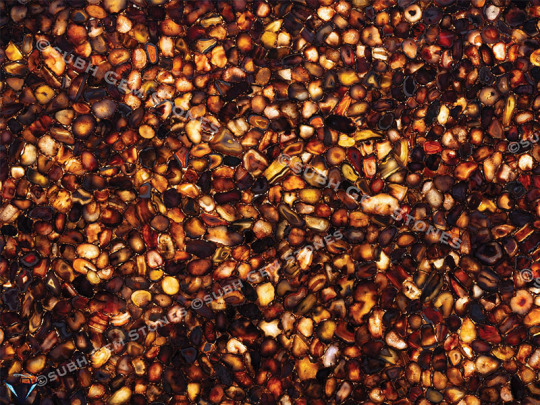
Prices are also provided online with basic pricing structures for exporting as well as retail purchase information. Gemstone Slab Exporters in India are the most popular market for these authentic gemstones because many Indian gemstone companies buy them in bulk and export them to the entire world. There are many companies in India that export gemstone slabs. However, it is important to select a good quality and trusted exporter. This article reviews the top brands.
Subh Gem Stones, is well known for supplying quality Gemstone Slabs. Come to visit us on the website and find out more about Gems and Gemstones.
While pure jewellery stores offer their purchasers different product alternatives, they mainly offer gemstone slabs that have been imported from sources other than India. In contrast, Indian wholesalers not just have plenty of inventory right at the retail stores, but additionally provide Indian sourced gems to the global marketplace nevertheless supply urns for customers with need for larger quantities or higher premiums in regards to stone quality or authenticity verification purposes.
These two approaches reflect an unusual duplicity for dealers like Subh Gemstones who work with each manufacturers as well as dropshippers from countries from Asia to Africa and every one of several pockets of both Europe and America - sending through its employees over 10 million carats annually .
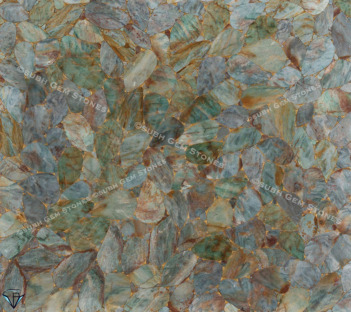
The company offers a wide range of services to customers, including assistance in selecting the perfect stone for a project, installation and maintenance services. We take pride in our dedication to customer satisfaction, going above and beyond to ensure that every customer is completely satisfied with their purchase. To provide the best solutions, the company's expert team collaborates closely with customers to understand their specific needs and requirements.
The gemstone slabs provided by us are highly sought after by architects, builders and designers for use in both residential and commercial projects. The natural beauty and
durability of the stone slabs make them perfect for use in flooring, countertops, and wall cladding, adding a touch of elegance and luxury to any project. The company’s
state-of-the-art machinery and skilled craftsmen work together to create slabs that are smooth, even, and free of any defects, ensuring that each slab is of the highest quality.
If you are looking for best gemstone slabs then you can deal with Subh Gem Stones. Reach us
0 notes
Photo
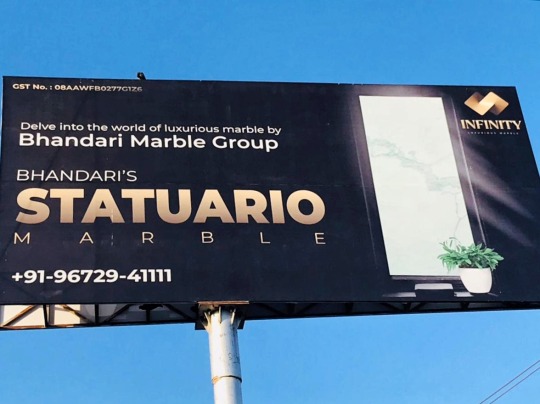

Enriching The World With Marble, Granite And Natural Stone Flooring , Elevation stone, Limestone, slate, Decoration stone, Countertops, surfaces, Wall cladding stone, Tabletops, treads, bathrooms countertops, reception tops, monuments, Pavements, Driveways, Solutions, Keeping In Mind The Healthy, Economical Parameters and as per International standard.
Bhandari Marble Group India
A Global Conglomerate with an enriching history of 3 centuries in Indian stone and 5 decades in Italian marble, we manifests an extensive business reach. Family business from 1631 and Established Bhandari Marble Group India by Late Sh. Roopchandji Bhandari, we are today one of the affluent Manufacturing Pioneers in the Natural Stone, Granite, sandstone, limestone, quartzite, slate, marble Industry. We started to diversify, by venturing into the Jewelry industry in 1631, Italian marble in 1969 and export business of Natural stone in 1990. We further evolved by manufacturing multi-colour Kitchen countertops, & Marble slabs and tiles for high-quality in 1992. It was in 1994 when Bhandari Marble Group India successfully started to operate in full swing. This and the consecutive years therein marked the beginning of a great businesses era for Bhandari Group. Over these years we also ventured into Stone Handicrafts and Trading. Furthermore, Bhandari got its first significant recognition from the Government of India with an Export Excellence in 2002.
To strengthen our foothold in the International market, we established The Infinity Luxurious Imported Marble in India in 2020. With this, we successfully developed a fully integrated Italian Statuario marble, as our first foreign investment. We then began to broaden our horizons from 2016-18 by expanding our reach and businesses in more then 55 Countries, the United States of America, Canada , Kuwait, France, Germany, Australia, Ethiopia, Kenya, China, Madagascar, Singapore, Bhutan, Maldives, Shri lanka, Thailand, Gulf countries, Russia, Uzbekistan, Middle East and South-East Asia and all around the World 🌏.
We Are Today exporting In More Than 55 Countries In The World
With over Bhandari brands operating worldwide, The Infinity Group deals in Stone dominating industries.
THE INTERNATIONAL STANDARDS COMPANY, WE ASSURE HIGH QUALITY AND BEST SERVICE GLOBALLY.
Yes, we are a family,
We work hard, Party harder!
We believe that unity and teamwork are the key drivers of growth and development 🙌 of our business.
What We Have Achieved
Our Accomplishments
We have installed Marble Stone Studio with a capacity of producing more than 900 types of marble, granite, sandstone, limestone, quartzite, slate and precious Statuario Marble under one roof.
Over the years, we have earned the prestigious reputation of a ‘Supreme Quality′ provider. We are also proudly recognised as oldest and best Company in Marble, Granite and Natural Stone industry.
What Makes Us Different?
Our Approach :
Each member of the Bhandari family is honed to follow an ethical sales approach along with the international service traits and Nature friendly. It is when you deal with us, you get to experience the difference.
Our Experience :
Extending a perfect blend of intelligence and maturity, Bhandari Group offers you a wholesome business experience.
Our Focus :
In addition to our external clients, we believe our employees are our real Brand Ambassadors. We therefore, assure to strengthen our roots by timely polishing their skills.
Our Priority :
You the Architects , Interior Designers, Builders, Hoteliers, contractors, professionals, specialists, customer is our foremost priority. At every step of our association, we ascertain to understand and imply to your needs.
The Management
Mr. D.C BHANDARI
Chairman
Mr. Rahul Bhandari
CEO
Mrs. Kaavya
Sales and Marketing manager
LET'S GET IN TOUCH
Chairman’s Message
Integrity, Efficacy, Accountability, Unity and Agility are the defining elements of our group. These are the values we have derived from our forefathers and continue to transcend and practise in our present work culture.
Unveil the culture of consistency, growth and acknowledgement at Bhandari.
0 notes
Text
Home Design Software Market 2022: Key Players, Applications, Market Size.
Home Design Software Market is expected to grow at CAGR of 9.8% from 2021 to 2028.
The online house design software market will benefit from the growing digital workplace and mobile workforce, as well as architects' efforts to adopt preventive measures, decreasing the need for remodelling and rebuilding.
COVID-19 has the potential to have three major effects on the global economy: directly impacting production and demand, causing supply chain and market disruption, and having a financial impact on businesses and financial markets. Our analysts, who are monitoring the situation throughout the world, believe that the market would provide producers with lucrative opportunities following the COVID-19 dilemma. The purpose of the report is to provide a more detailed representation of the current circumstances, the economic slowdown, and the influence of COVID-19 on the total industry.
DOWNLOAD FREE SAMPLE REPORT@ https://www.crediblemarkets.com/sample-request/home-design-software-market-433482
Market Segmentation:
By product type:
Home & Floor Plan Design
Interior & Room Design
Landscape & Garden Design
Others
By application:
Personal Use
Commercial Use
By Key companies:
Punch Home & Landscape Design
TurboFloorPlan
Home Designer Suite
Sweet Home 3D
Virtual Architect Ultimate
Chief Architect
Total 3D Landscape & Deck
Total 3D Landscape & Deck
DreamPlan
To Buy This Report@ https://www.crediblemarkets.com/reports/purchase/home-design-software-market-433482?utf8=%E2%9C%93&license_type=single_user
By region:
North America
Europe
Asia Pacific
Latin America
Middle East & Africa
Key benefits:
This market share and analysis is based on a comprehensive analysis of the main developments in the Home Design Software industry.
The development strategies of major market players are included to understand the competitive scenario in the global Home Design Software Market.
This study offers an in-depth analysis of market trends to clarify upcoming investment pockets.
It provides information on key engines, restraints, and capabilities, along with an analysis of their impact on market size.
Reasons to Purchase this Report:
The research contains a wealth of information, including market dynamics and opportunities for the forecast period.
Quantitative, qualitative, value (USD Million), and volume (Units Million) data are among the segments and sub-segments.
Data on demand and supply forces, as well as their impact on the market, may be found at the regional, sub-regional, and country levels.
In the last three years, the competitive landscape has included share of significant competitors, new advances, and strategies.
Companies that provide comprehensive products, important financial information, latest developments, SWOT analyses, and strategies.
Some Table of Content
Table of Content
1 Home Design Software Market - Research Scope
1.1 Study Goals
1.2 Market Definition and Scope
1.3 Key Market Segments
1.4 Study and Forecasting Years
2 Home Design Software Market - Research Methodology
2.1 Methodology
2.2 Research Data Source
2.2.1 Secondary Data
2.2.2 Primary Data
2.2.3 Market Size Estimation
2.2.4 Legal Disclaimer
Contact Us:
Credible Markets
99 Wall Street 2124 New York, NY 10005
Email- [email protected]
0 notes
Text
10 Key Kitchen Dimension You Need To Know
The most alluring and gripping area at home is the kitchen. Nothing can be more rejoicing than looking at the kitchen and thinking in one word, "It's amazing." Since the kitchen is the most trafficked section of the house, it's essential to arrange it systematically and make it comfortable. This article is going to provide helpful tips on different kitchen dimensions, guiding you towards a wow kitchen. Here are some key kitchen dimensions:
Height of Kitchen Cooktop
The height of the kitchen cooktop should be according to the complete comfort zone so that one doesn’t need to exert any pressure on their back. The standard height should be 34 inches. According to the thumb rule, there must be a gap of 4 inches between the top of the counter and the elbow when you are standing beside it.
depth of the countertop
The standard depth of the countertop should be 2 feet along with lower cabinets and drawer units, depth may vary according to the size of kitchen appliances or kitchen essentials needed. Everything should be a clear ensure of comfort and convenience while working in the kitchen. The depth of an island cooktop should be 4 feet long and 3 feet wide so it can be easy for two people to work together standing on two either side facing each other.
Cost Estimation
To make any project a cost-effective one, it is very important to cut down all extra costs required within the projects. For an architect, it is quite a tough task to visualize and meet all project requirements within the estimated time taken and budget. Even on an ongoing project, an architect is responsible for verifying and confirming that each constraint is an actual resemblance to the finalized blueprints.
Distance between the countertop and upper cabinets
The minimum purview or separation between the kitchen countertop and upper cabinets ranges between 24 and 27 inches initially. To maintain sufficient distance between the countertop and upper cabinets, it is very important to identify the height of the kitchen room and accordingly select an appropriate height for the upper cabinets.
Depth of overhead cabinets
Depth of overhead cabinets should lie between 12 and 15 inches, these overhead cabinets are given less depth to prevent from banging their head while working in the kitchen. If one wants a refrigerator above overhead cabinets, it should be at least 24 inches deep as per your design in your vision for a sober look.
Distance between stove and chimneys
The clearance between the bottom of the chimney and the gas stove should be almost 20 to 36 inches, it will compensate for the performance of the chimney, as it should be cross-checked according to the company manual before installation of the chimney.
Maximum height of microwave
The height of the microwave should be 13 to 18 inches from the countertop, dimensions and height can be done as per convenience to increase overall working efficiency. The only thing one needs is to have a proper arrangement for the microwave to be installed in a well-furnished kitchen.
Kitchen Sink Clearance
Nowadays, sinks are designed with drainboards on one side of the sink. There should be a gap of 3 feet on the other side to keep the kitchen clean and arranged. Ultimately, everyone needs an ideal clean kitchen with an aurora of newly chased light of innovation in glory-gushed ideas.
#interior designer#walls asia architects#interior#interiordesign#architects#architecturaldesign#hyderabad#wallsasia#architecture#design
1 note
·
View note
Text
About us

Walls Asia architects and interior designers is full service architecture Design Company in Hyderabad specializing in Residential, commercial, retail, hospitality and Industrial design. As a firm, we've been honing our skills since 2007. We believe that design really can make the world a better place. We provide wide range of architectural services required to take a project from programming through construction.
Walls Asia architects and interior designers are committed to total design solutions – balancing buildings, branding, and experiences. We provide Architecture Design services for houses, residential apartments, offices, hotels, restaurants, colleges, schools, lodges, shopping malls, Hospitals, Ware Houses, and Industries etc. We serve all surrounding areas of Hyderabad as well as Nationwide and internationally.
#Walls Asia architects#interior designers#architects and interior designers#residential apartments#residential architects#architecture'#Architect firms in Hyderabad#architectural services
0 notes
Photo

Walls Asia is one of the Leading Architects in Hyderabad, provides an Amazing Design Ideas.
Contact us for Fabulous Design Ideas : 7991553333
#interior#interior designer#architecture#Architects#Architects in Hyderabad#interiordecoration#ArchitectureDesignservices#Walls Asia#interiordesigning
0 notes
Text
Stainless Steel Decorative Sheets Suppliers in India
Stainless Steel Decorative Sheet Manufacturers In India | Stainless Steel Decorative Sheet Suppliers In India
We offer a captivating selection of decorative stainless steel sheets, crafted from high-grade, rust-resistant material sourced from our trusted suppliers. These versatile sheets come in a variety of stunning finishes, such as mirror polish for a reflective touch, brushed for a modern look, or etched and embossed for added elegance.
Vibrant colors like copper plating are also available, along with the option for unique, laser-cut designs. Perfect for both interior and exterior design, these decorative sheets can elevate your kitchen backsplashes, elevator cabs, walls, ceilings, furniture, and more.
.Why Use Stainless Steel Decorative Sheets?
SS Decorative Sheets is a long-wearing thing and reasonable elective which have a tremendous interest among our clients. These lighting up steel sheets are given and exchanged by us all over USA, Australia, Canada, and Gulf Countries especially in Dubai, Bahrain, Iran, Iraq, Kuwait, Oman, Qatar, Saudi Arabia, and the United Arab Emirates, etc.
Other Industries in which Stainless Steel Decorative Sheets are Used: automatic doors, elevators, screen walls, decoration, kitchenware, transportation, medical, large scale & high degree architect, traffic facilities and are known for their fine surface finish.
Stainless Steel Decorative Sheets Manufacturers, Stainless Steel Decorative Sheets Suppliers, Stainless Steel Decorative Sheets Stockists, Stainless Steel Decorative Sheets Exporters
Stainless Steel Decorative Sheets Flanges Manufacturers in India, Stainless Steel Decorative Sheets Flanges Suppliers in India, Stainless Steel Decorative Sheets Flanges Stockists in India, Stainless Steel Decorative Sheets Flanges Exporters in India
Features
A rich color and good sense of beauty
High-end and elegant
High corrosion resistance
Applications
Interior and Exterior Decoration
Shopping Malls
Hotel Interior
Restaurant
We exports Stainless Steel Decorative Sheets for these countries – Asia, North America, western Europe, Singapore,etc..
For More Details
contact us:-+91-9920888220
email id:[email protected]
If any enquiries please contact us our support team will connect you as soon as possible.
0 notes
Photo


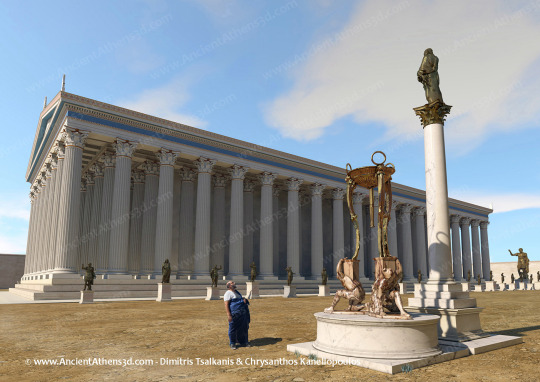
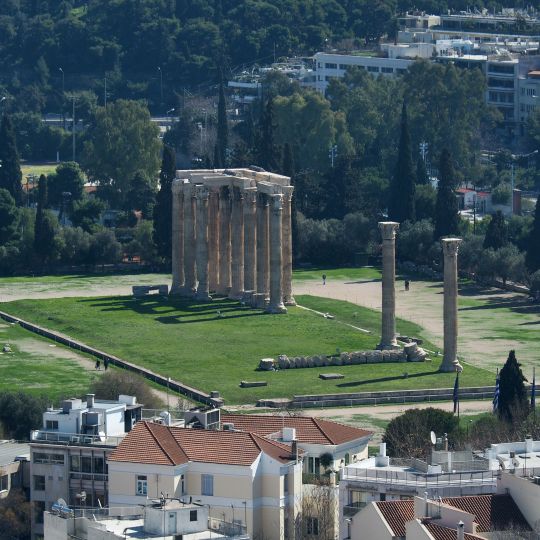

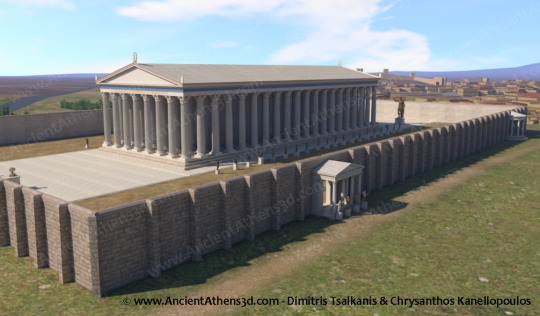
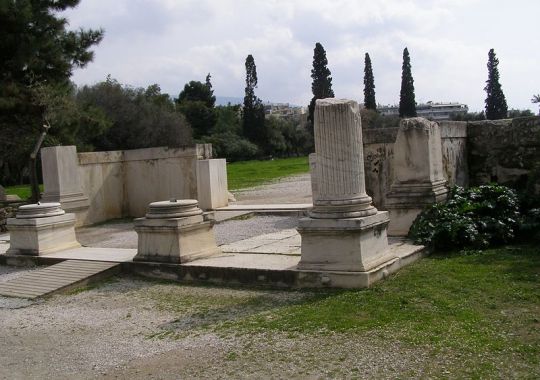


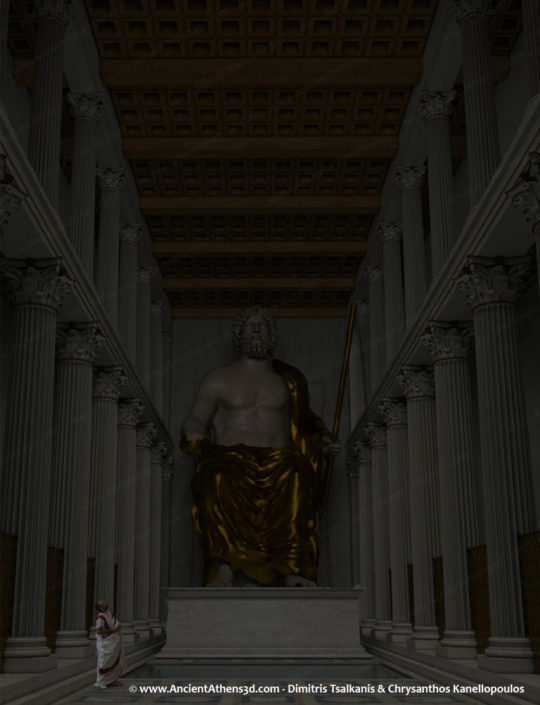
Olympieon (Temple of Olympian Zeus)
Athens, Greece
124-131 CE
Temple of Olympian Zeus was a Corinthian Octastyle Dipteral Temple deciated to "Olympian" Zeus, a name originating from his position as head of the Olympian gods. During the Roman period the temple, which included 104 colossal columns, was renowned as the largest temple in Greece and housed one of the largest cult statues in the ancient world.
The construction of the Temple of Zeus Olympios began in the archaic period by Peisistratus and his descendants (520 BCE). It was designed to look like the huge temples of Asia Minor. It would be a Doric temple with a foundation size of 41m x 108m. It would have eight columns in two rows in the narrow sides and 21 in the long ones. However, with the arrival of Democracy, it was considered as a symbol of tyranny and the construction stopped.
In the Hellenistic years, the king of the Seleucid Empire, Antiochus IV Epiphanes, ordered in 174 BCE the reconstruction of temple. The assigned architect was the Roman Cossutius who modified the initial plan of the building. The temple would now be of Corinthian order. In the narrow sides it would have three rows of 8 columns each, while in the long ones, there would be two rows of 20. It would have 104 columns in total. However, the works stopped again after the death of Antiochus, in 164 BCE.
In 86 BCE, when the Romans besieged Athens, general Sylla took two columns of the unfinished temple to decorate the temple of Jupiter in Campidoglio, in Rome. A third effort for the completion of the temple made by Augustus, was unsuccessful.
Finally, the emperor Hadrian accomplished the project in 131 CE. He respected the initial plan of Cossutius even keeping some of his columns which still stood. The columns were 17 metres high and had a diameter of 2m. A wall was built around the temple along which, dozens of his portraits were placed as offerings by all the cities of Greece. In the interior of temple there was one gold and ivory statue of Zeus and one of Hadrian himself.
The temple was deserted after suffering serious damage from their Heruli invasion in 267 CE. Afterwards it was used as a quarry, as the marble was used to manufacture lime.
The ancient writer and traveler Pausanias visited the Olympieion a few years after its completion and described it:
“Hadrian the Roman emperor dedicated the temple and the statue, one worth seeing, which in size exceeds all other statues save the colossi at Rhodes and Rome, and is made of ivory and gold with an artistic skill which is remarkable when the size is taken into account
Before the entrance to the sanctuary of Olympian Zeus, stand statues of Hadrian, two of Thasian stone, two of Egyptian.
Before the pillars stand bronze statues which the Athenians call “colonies.” The whole circumference of the precinct is about four stades, and they are full of statues; for every city has dedicated a likeness of the emperor Hadrian, and the Athenians have surpassed them in dedicating, behind the temple, the remarkable colossus.
On a pillar is a statue of Isocrates (…) there are also statues in Phrygian marble of Persians supporting a bronze tripod; both the figures and the tripod are worth seeing.”
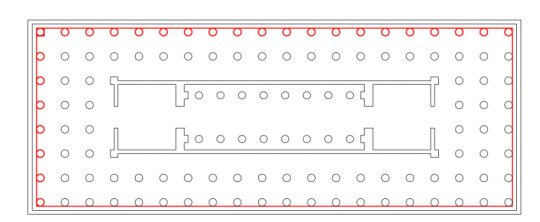
Sources: 1, 2, 3, 4, 5
#art#Architecture#travel#history#temple#zeus#mythology#Greek Mythology#roman#roman art#roman temple#Roman Mythology#corinthian#dipteral#octastyle#olympian#2 ce#hadrian#athens#greek#greek art#greek temple
336 notes
·
View notes
Text
The Dezeen guide to stone in architecture, interiors and design
Thinking of using stone in your project? Our latest Dezeen guide includes 15 popular types of natural rock used in architecture, interiors and design with links to hundreds of examples to inspire your own work.
Alabaster
Alabaster is a soft, fine-grained stone that has been used for centuries to carve elaborate forms and ornaments. However, its solubility in water means that it is best suited for indoor use.
In its pure form, alabaster is white and translucent, which makes it ideally suited to lighting design.
Studio Tack used tubular light shades made from alabaster to softly illuminate a cosy Japanese restaurant in New York (above), while lighting studio Allied Maker used the stone to create ornate totemic floor lamps.
Amarist Studio showcased the sculptural possibilities of the stone in its Aqua Fossil collection, which includes a coffee table with swooping, curved legs.
See projects featuring alabaster ›
Basalt
Basalt is a dark-coloured igneous rock that is formed when lava cools rapidly. It is most frequently used as an aggregate for concrete as it is low-cost and high-strength, but it is also a popular cladding and flooring material, especially when polished.
Examples of this include the facade of a small gallery in Amsterdam by Barend Koolhaas and a Hawaiian holiday home by Walker Warner Architects in which slender basalt cladding tiles are contrasted with cedar detailing (above).
Icelandic studio Innriinnri used two sculpted slabs of basalt stone to create a sculptural table that doubles as a stool or a piece of art, while South Korean artist Byung Hoon Choi polished the stone to create oversized outdoor furniture.
See projects featuring basalt ›
Flint
Flint is a highly durable stone found in abundance as irregular-shaped nodules in sedimentary rocks such as chalk. It has been used as a construction material since the Roman era, though it is not often seen in contemporary architecture.
Flint varies in colour, but it is commonly glassy black with a white crust. In architecture, it is usually knapped – split to expose its glossy inner face – before being laid in mortar.
Skene Catling de la Peña used a combination of knapped and unknapped flint to cover a wedge-shaped house in Buckinghamshire (above), which creates a subtle colour gradient across its facade.
See projects featuring flint ›
Gneiss
Gneiss, a robust metamorphic stone composed of alternating layers of different coloured minerals, is popular to use for flooring and worktops. Hues can range from pinks and golds to greens and dark greys.
Peter Pichler sourced grey gneiss with black-and-white bands from Passeier Valley in South Tyrol to create a large counter in the bar of an Italian Alpine hotel (above).
It can also be used as a cladding material, such as in Bernardo Bader Architekten's ski resort office in Austria and a radio broadcasting station in Nepal by Archium.
Granite
Granite is one of the most widely used stones in architecture and design. It forms from the slow crystallisation of magma beneath the Earth's crust. It is used for everything from load-bearing structures to cladding, worktops and furniture.
Its popularity is down to its high compressive strength, durability and low porosity. Granite is also found in an array of colours, making it suitable for a range of spaces and styles.
Heatherwick Studio recently used green granite to make a trio of its sculptural Spun chairs (above), while Snøhetta has used a grey variety to cover almost every surface of an Aesop store to emulate a rocky coastline.
Architecture studio NOARQ tested the material's strength by elevating a cabin on thick blocks of granite over the entrance to a stone villa in Portugal.
See projects featuring granite ›
Laterite
Rusty-red laterite stone is formed from the leaching of rocks and soil during alternating periods of high temperature and heavy rainfall in tropical areas. This process leaves behind a high concentration of insoluble iron oxides, which gives the rock its colour.
Laterite is typically used in construction in Africa and Asia in the form of bricks, which have excellent thermal mass and a low embodied energy. These bricks are made by cutting the rock out from below the water table when it is moist and leaving it to harden in the air.
Architect Francis Kéré used locally sourced laterite to build the walls of a school in Burkina Faso and Studio Lotus has used it to create the pedestal of a government building in India (above).
Limestone
There are many different types of limestone, a sedimentary rock composed mainly of calcium carbonate. It is considered a good all-round building material as it is easy to cut and carve and usually has a uniform texture and colour.
Popular limestone varieties include travertine (see below) and Portland stone, which is used on notable buildings in London such as St Paul's Cathedral and Buckingham Palace.
David Chipperfield Architects recently used limestone to clad the Kunsthaus Zurich museum extension in Switzerland and John Pawson used it to line the surfaces of a minimalist flagship store in Japan for fashion label Jil Sander.
Design projects that utilise limestone include a blocky furniture collection called Dig Where You Stand by students from the Estonian Academy of Arts (above).
See projects featuring limestone ›
Marble
Marble is a metamorphic rock with veins of calcite crystal. It forms from limestone that has been exposed to heat and pressure and is found in many colours. Marble is strong but easily carved and polishes well, making it suitable for numerous applications.
It is most popularly used in kitchen and bathroom designs, but it is often used as cladding too, such as in Alexander Owen Architecture's garden room in London (above).
See projects featuring marble ›
Onyx
Onyx is a translucent gemstone composed of parallel bands of quartz, found in almost every colour. It has a long history of use in sculpture and jewellery but is less commonly found in architecture and design. However, onyx is sometimes used as a facing or lighting.
Projects that use onyx include a mausoleum in Minneapolis by HGA and an office by Anne Claus Interiors where it has been used to clad a multi-coloured bar (above).
See projects featuring onyx ›
Porphyry
Porphyry is a strong and hard-wearing igneous stone that comes in reddish-brown to purple hues. It is composed of large-grained crystals embedded in a fine-grained groundmass.
It has been used in architecture and design since antiquity, though it is rarely seen in contemporary architecture and design. Today it is mostly used as aggregate in the construction of roads in places where cars require studded winter tires.
Pedevilla Architects used a block of porphyry as a kitchen island for a cookery school in South Tyrol, while architect Claudio Silvestrin used it to line the walls of a Milanese fashion boutique.
Quartzite
Formed from sandstone exposed to high heat and pressure, quartzite is a very hard and durable metamorphic rock. It is usually found in white and grey shades.
Quartzite is a popular material for kitchen countertops as it is resistant to staining, but is most commonly used as a decorative cladding or flooring.
Examples of this include a dwelling in Utah by Klima Architecture, Peter Zumthor's Therme Vals spa (above) and a monolithic Parisian library by Agence Pascale Guédot.
See projects featuring quartzite ›
Sandstone
Sandstone is composed of fine silicate grains that have eroded from other rocks, giving it either a warm red, yellow or orange colouration.
Used for construction since prehistoric times, sandstone continues to be a popular choice in architecture and design as it is abundant, durable and easy to handle.
Recent architectural projects that use the material include a cathedral extension by Feilden Fowles, a museum by Álvaro Siza, and an oval-shaped all-girls school in India (above) that is designed to blend into its desert surroundings.
See projects featuring sandstone ›
Shale
This grey fine-grained stone is one of the most common sedimentary rocks on earth. It is formed from the compaction of silt and mud into thin, fissile layers. In architecture and design, shale is usually crushed and processed into bricks, tiles and pottery, or heated with limestone to make cement.
Aketuri Architektai used shale tiles to clad a pointy woodland house in Lithuania (above), while Spaceworkers wrapped the stone around the basement of a Portuguese house to provide it with a raw, rugged aesthetic.
See projects featuring shale ›
Slate
Slate is a dark fine-grained stone that is formed when a sedimentary rock, such as shale, is subjected to high pressure. It is a foliated rock, meaning it is made up of thin sedimentary layers, which allows it to be split – or riven – into thin slabs.
Slate is durable and weather- and frost-resistant, making it a popular material choice for cladding, roofing and paving.
In interior projects, the material is often also used as floor tiles, hearths and kitchen worktops. Natalie Weinmann sanded and polished the stone to create a blocky furniture collection.
TRIAS used it to clad a small writer's retreat in a Welsh valley while Austin Maynard Architects diamond, scalloped and brick-shaped slate shingles to cover a Melbourne house (above).
See projects featuring slate ›
Travertine
One of the most commonly used forms of limestone is travertine, which has been sourced from mineral springs for use as a building material for centuries. The largest building in the world made from this stone is the Colosseum in Rome.
Today, travertine is mostly processed into tiles for internal and external surface coverings, but it is also a popular material for bathroom fit-outs. As it is found with troughs on its surface, processing travertine usually involves polishing its surface.
Projects that use travertine include an extension to a German museum by Bez + Kock Architekten (above), an apartment renovation in Lithuania by 2XJ, and a furniture collection by David/Nicolas.
See projects featuring travertine ›
Recent popular stone projects on Dezeen include an inconspicuous house on the island of Serifos, a monolithic spa by Smartvoll, a collection of luxury lodges on England's Jurassic Coast and a coffee table by Studio Twenty Seven.
The main image is of Rajkumari Ratnavati Girls' School by Diana Kellogg Architects taken by Vinay Panjwani.
The post The Dezeen guide to stone in architecture, interiors and design appeared first on Dezeen.
4 notes
·
View notes
Text
The Picturesque Faisal Mosque

The Faisal Mosque is a mosque located in Islamabad, Pakistan. It is the third-largest mosque within South Asia, located on the foothills of Margalla Hills in Pakistan's capital city of Islamabad. The Faisal Mosque was conceived as the National Mosque of Pakistan and named after the late King Faisal bin Abdul-Aziz of Saudi Arabia.


Faisal mosque is the major tourist attraction in Pakistan, the mosque is a contemporary and influential piece of Islamic architecture. It is located at the north of the city’s main against the backdrop and at the foot of the picturesque Margalla hill. Therefore, it created a focal point of the capital, to command the entire panorama of the city and to ensure visibility during day and night.

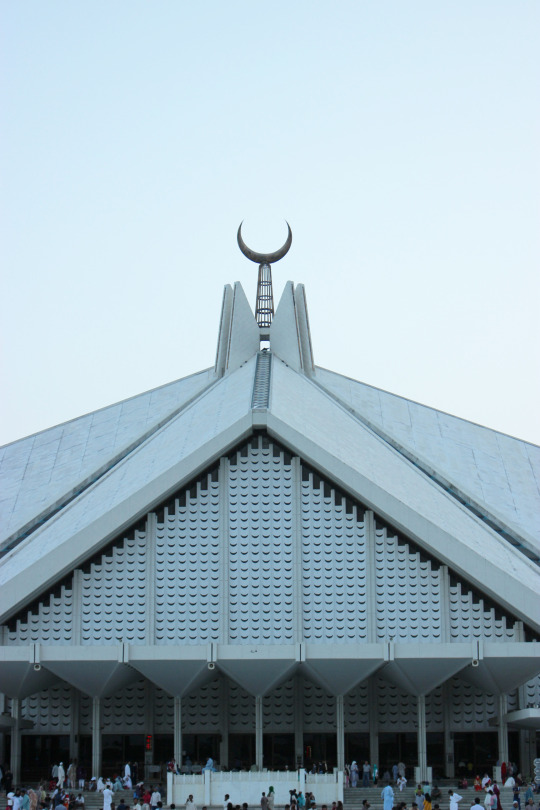
Completed in 1986, the mosque features a contemporary design consisting of eight sides of concrete shell and is inspired by the design of a typical Bedouin tent, designed by Turkish architect Vedat Dalokay, it is an iconic symbol of Islamabad throughout the world. It consists of a large triangular prayer hall and four minarets. However, unlike traditional masjid design. The minarets borrow their design from Turkish tradition and are thin and pencil like. Stabbing 260 feet into the air, the minarets were designed in a perfect one-to-one ration with the base, to create an invisible cube that alludes to the Kabaa.
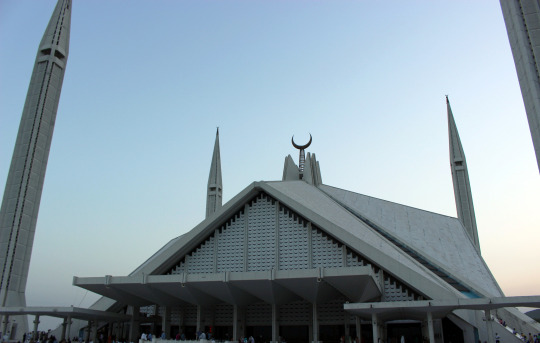
Instead of traditional domes usually associated with mosques, the main prayer hall is an eight faceted concrete shell representative of a desert tent. An impressive engineering feat, the shell reaches is supported on four giant concrete girders. The surface is faced in white marble and decorated inside with mosaics and a spectacular Turkish style chandelier. The hall can accommodate 10,000 worshippers. It covers a whopping 54,000 square feet, the mosque’s design is truly the most intriguing.

“Prayer is an amazing exchange. you hand over your worries to Allah and Allah hands over his blessings to you.”
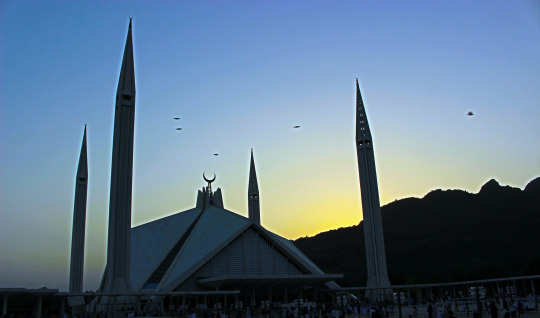
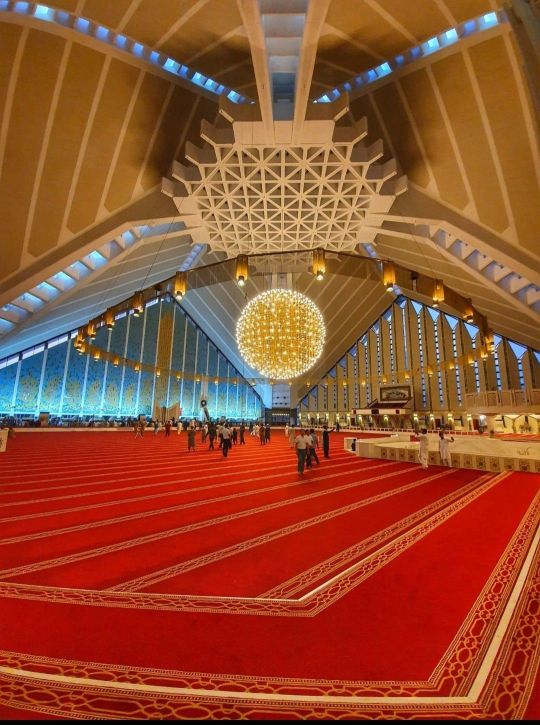
The interior of the main tent-shaped hall is covered in white marble and decorated with mosaics and calligraphy by the famous Pakistani artist Sadequain, and a spectacular Turkish-style chandelier.
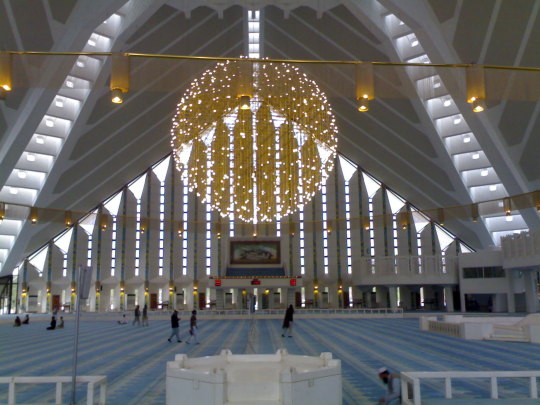
The mosaic pattern adorns the west wall and has the Kalimah written in early Kufic script, repeated in mirror image pattern.

The primary purpose of the mosque is to serve as a place where Muslims can come together for prayer, as praying together holds great importance in Islam. Women can't offer namaz in a Mosque is a myth, Islam allows both men and women to offer namaz at the same place.
1 note
·
View note
Text
Discover Smithsonian Open Access with Treasures from the Cooper Hewitt Collection
This year, the Smithsonian Institution launched its Open Access initiative. Smithsonian Open Access invites you to share, remix, and reuse millions of the Smithsonian’s images—right now, without asking.
Discover Smithsonian Open Access with these five designs drawn from the Cooper Hewitt collection. What will you create?
PRINT, FAUST IN HIS STUDY, CA. 1652, Rembrandt Harmensz van Rijn, Dutch, 1606–1669
In a famous German story, a dissatisfied scholar named Faust exchanges his soul for limitless knowledge and pleasure. The tale of Faust’s deal with the Devil has captured the imagination of writers, filmmakers, and composers for centuries, spawning countless adaptations and retellings. This etching was created by the Dutch master Rembrandt around 1652—just over a century after the death of Johann Georg Faust, the historic alchemist, astrologist, and magician said to have inspired the fictional Faust. Here, we see Faust in his study, spellbound by a fantastical and radiant magic disc.
GO TO Smithsonian Open Access
PEACOCK SIDE CHAIR, 1921–22, Frank Lloyd Wright, American, 1867–1959
Although demolished in 1968, the Imperial Hotel (1919-22) in Tokyo designed by Frank Lloyd Wright remains his best-known work in all of Asia. Wanting to unify every aspect of the building, he designed its exterior as well as interior. This chair was one of many that filled the hotel’s extravagantly decorated banquet hall called the Peacock Room. Its shaped backrest and colored leather upholstery echoed the hall’s geometric motifs and stylized wall paintings.
GO TO Smithsonian Open Access
DRAWING, STUDY FOR MAXIMUM MASS PERMITTED BY THE 1916 NEW YORK ZONING LAW, STAGE 4, Hugh Ferriss, American, 1889–1962
Gotham, anyone? In 1916, concerns that towering skyscrapers would block light from reaching the streets below prompted New York City to pass the nation’s first citywide zoning code. The result, colloquially known as the “set-back law,” produced the iconic stepped silhouettes of structures like the Waldorf Astoria and the Empire State Building.
This drawing, one of a series of four by architect and illustrator Hugh Ferriss, was originally published in the New York Times in 1922. Later republished in Ferriss’ 1929 book The Metropolis of Tomorrow, these drawings not only influenced architects and urban planners, but also comic book artists and filmmakers striving to envision futuristic cities.
GO TO Smithsonian Open Access
SIDEWALL, THE PEACOCK, 1896, Gift of Grace Lincoln Temple
Popularized by Oscar Wilde and the Aesthetic movement, peacocks grace more than 50 wallpaper designs found in the Cooper Hewitt collection. In this example, eye-catching peafowls fan their plumage amidst pink and purple poppies, conjuring visions of formal landscaped gardens.
GO TO Smithsonian Open Access
MAN’S ROBE (CHINA), 1796–1820
This dragon robe (ji fu吉服, literally, auspicious dress) is part of a long tradition. Dragon robes originated in the Liao dynasty (907-1125), and continued to be donned during the Ming Dynasty (1368-1644) and the Qing Dynasty (1644-1911). The wearer’s status and gender determined the color of the robes, the number and placement of robe slits, and other elements of the garment.
This robe likely belonged to an official during the Qing dynasty’s Jiaqing (嘉慶) period, which lasted from approximately 1796-1820. This is suggested by the robe’s brown color, its two front and back slits, and the motif of the five-clawed dragon. Theoretically restricted to emperors and princes, five-clawed dragons circulated more widely during this period of the Qing dynasty. A closer look at this robe reveals more auspicious details, such as a peony, a flaming pearl, a lotus, and a fish.
GO TO SMITHSONIAN OPEN ACCESS
Hannah Maureen Holden is the Digital Content Editor at Cooper Hewitt, Smithsonian Design Museum.
from Cooper Hewitt, Smithsonian Design Museum https://ift.tt/3cdRrKW
via IFTTT
19 notes
·
View notes